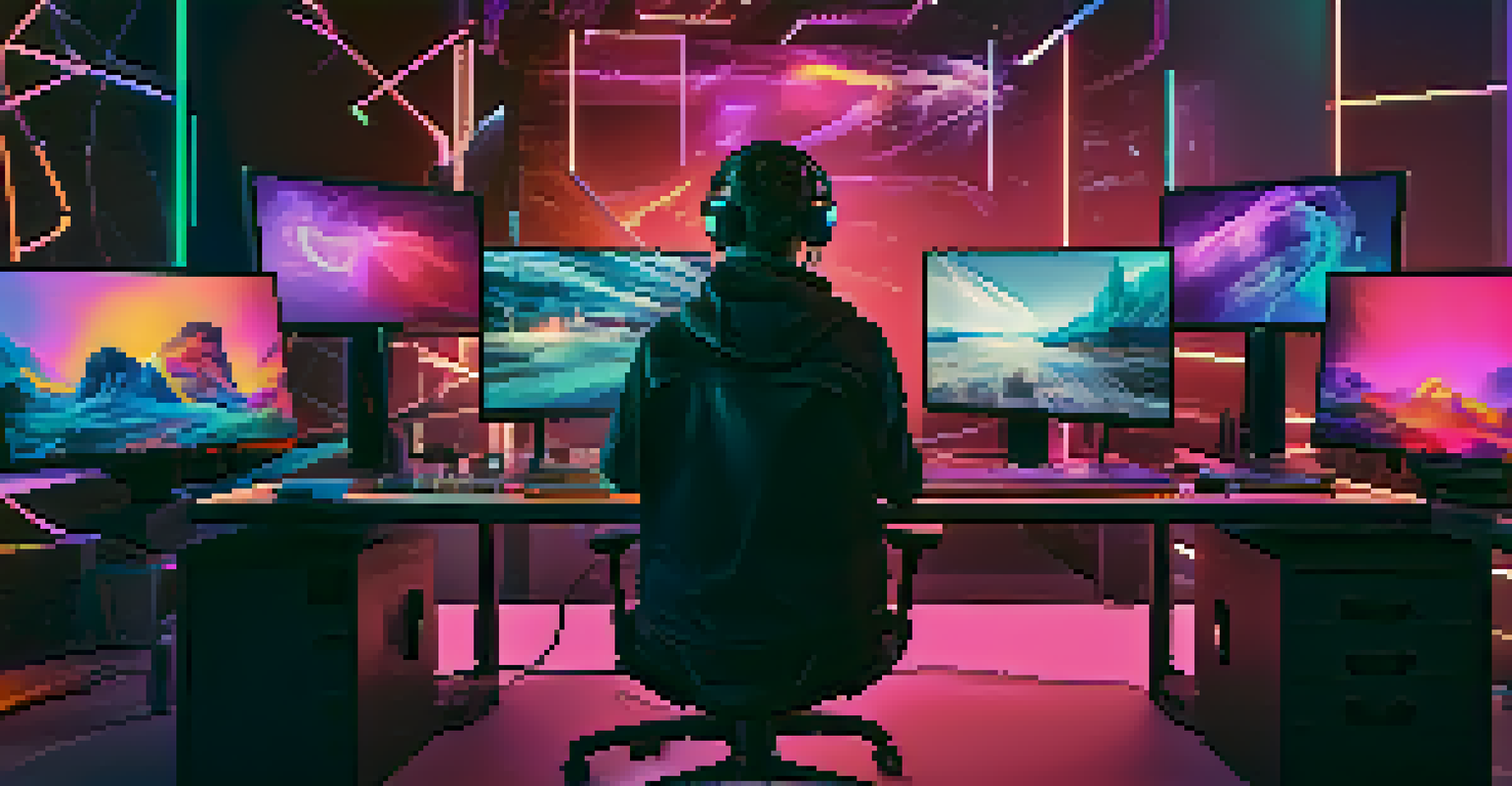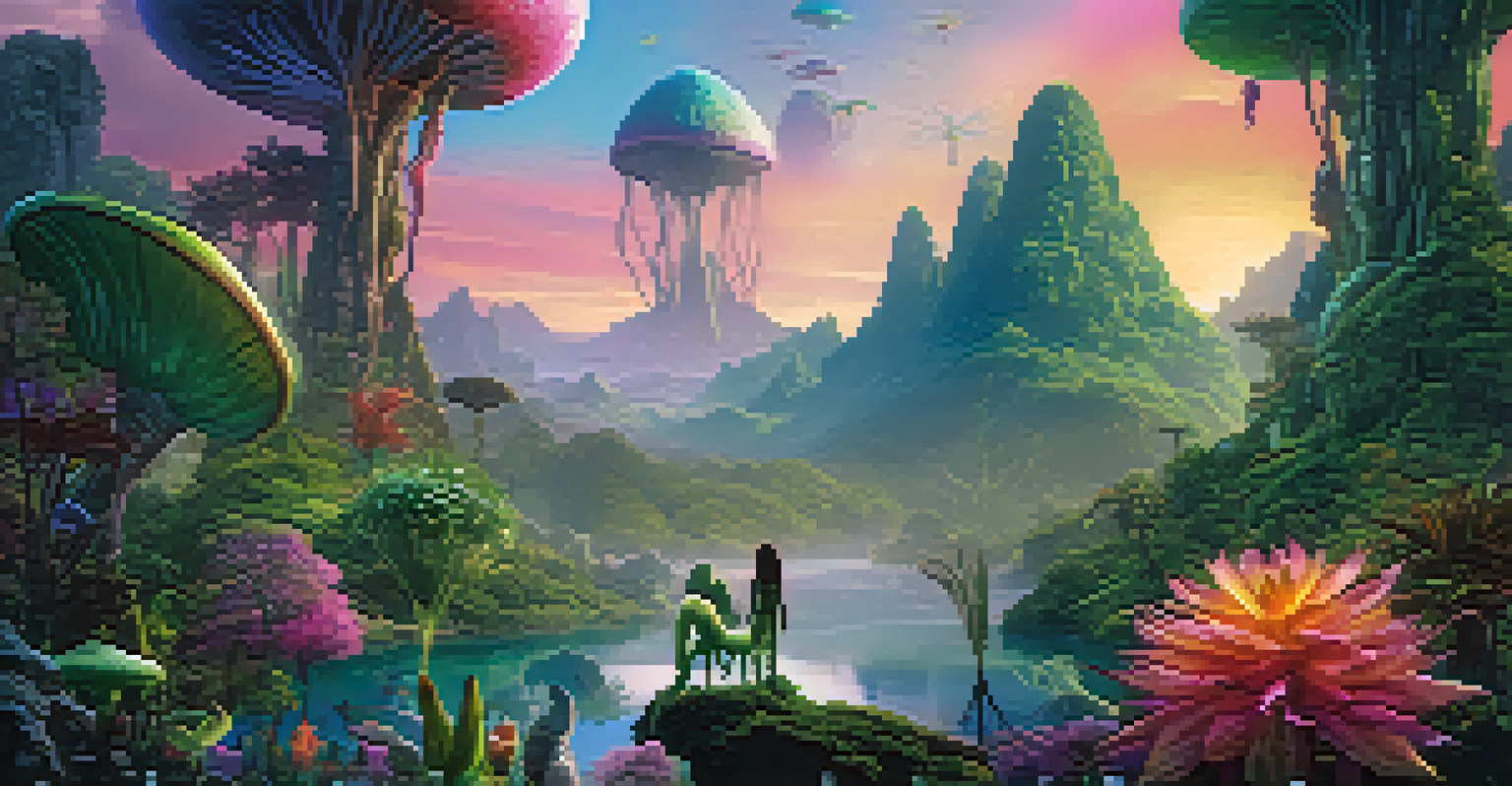The Evolution of Visual Effects Artists in Hollywood History

The Birth of Visual Effects: A Historical Overview
The journey of visual effects (VFX) artists in Hollywood began in the early 1900s, where filmmakers relied on practical effects and simple tricks. Silent films, such as 'A Trip to the Moon' by Georges Méliès, showcased the magic of illusions, setting the stage for what was to come. These early pioneers paved the way for future innovations, demonstrating that imagination could turn the ordinary into the extraordinary.
Visual effects are a powerful tool for storytelling, allowing filmmakers to create experiences that transcend reality.
As the film industry evolved, so did the techniques used in visual storytelling. The introduction of stop-motion animation and miniatures allowed filmmakers to create fantastical worlds previously thought impossible. This blend of creativity and technology laid the groundwork for the more complex effects that would emerge in the decades to follow.
By the 1950s and 60s, the need for specialized visual effects artists became apparent. Movies like '2001: A Space Odyssey' utilized groundbreaking techniques that required skilled professionals to execute intricate designs. It was during this time that VFX began transitioning from a mere novelty to an essential element of filmmaking.
The Golden Age of Practical Effects
The late 1970s and 1980s marked a golden age for practical effects in Hollywood. Films like 'Star Wars' and 'Alien' showcased the artistry of makeup, puppetry, and mechanical effects, captivating audiences worldwide. Artists like Rick Baker and Stan Winston emerged as legends, pushing the boundaries of what could be achieved with physical materials.

These practical effects were not just visually impressive; they also created a tangible connection with the audience. Viewers could see and feel the reality of the effects, which often led to more immersive storytelling. The craftsmanship involved in creating lifelike creatures and environments set a high standard for future visual effects work.
Evolution of VFX Techniques
Visual effects have transformed from practical effects in early cinema to a blend of CGI and practical techniques, revolutionizing storytelling.
However, the rise of computer-generated imagery (CGI) was on the horizon, ready to challenge the dominance of practical effects. While practical effects remained popular, the film industry began to experiment with digital technologies, hinting at an imminent shift in how visual storytelling would unfold.
The Rise of Computer-Generated Imagery (CGI)
The 1990s ushered in a new era with the advent of CGI, revolutionizing the visual effects landscape. Films like 'Jurassic Park' showcased groundbreaking digital dinosaurs that left audiences in awe. This marked a monumental shift, as CGI artists began to play an increasingly significant role in the filmmaking process.
The magic of cinema lies in the blend of imagination and technology, where visual effects artists turn dreams into visuals.
With CGI, the possibilities seemed endless, allowing filmmakers to create worlds and characters that were previously unimaginable. This technological advancement opened doors for creativity, enabling filmmakers to tell stories that were limited only by their imagination. The marriage of CGI with live-action footage created a seamless experience for viewers.
However, this shift also sparked debates about the balance between practical effects and CGI. Many purists argued that CGI lacked the tangible quality of physical effects, prompting some filmmakers to find a harmonious blend of both techniques in their projects.
The Modern Era: A Blend of Techniques
As the 21st century unfolded, the role of visual effects artists became more multifaceted. Today, VFX artists often work alongside practical effects teams to create a cohesive cinematic experience. This collaboration allows for more intricate storytelling, combining the realism of physical effects with the limitless potential of CGI.
Films like 'The Lord of the Rings' and 'Avatar' exemplify this modern approach, where stunning visuals captivate audiences while maintaining a sense of authenticity. This blend not only enhances the visual narrative but also engages viewers on a deeper emotional level. The artistry involved in creating these effects has never been more intricate or essential.
VFX Artists and Technology
Advancements in technology have reshaped the skills required for VFX artists, emphasizing both creativity and technical proficiency.
Furthermore, advancements in technology, such as virtual reality and augmented reality, have expanded the role of VFX artists. They are now not only creating effects for films but also for immersive experiences in video games and theme parks, showcasing their versatility and importance in the entertainment industry.
The Impact of Technology on VFX Careers
With rapid technological advancements, the skill set required for VFX artists has evolved significantly. Familiarity with software like Maya and After Effects has become essential, allowing artists to create stunning visuals efficiently. Online tutorials and communities have made it easier for aspiring artists to learn and refine their craft.
However, this technological reliance also presents challenges. As automation and AI become more prevalent, some fear that the traditional roles of VFX artists may be threatened. Yet, creativity and artistic vision remain irreplaceable, ensuring that human insight will always be needed in the storytelling process.
Moreover, the democratization of technology has led to a surge in independent filmmakers using VFX. This shift has created more opportunities for emerging artists to showcase their talents, paving the way for fresh voices in the industry. As a result, the landscape of visual effects continues to diversify and expand.
The Future of Visual Effects Artists
Looking ahead, the future of visual effects artists in Hollywood is poised for exciting developments. As virtual and augmented reality technologies continue to evolve, VFX artists will play a crucial role in shaping immersive experiences that blur the line between reality and fantasy. This shift opens new avenues for storytelling and audience engagement.
Additionally, as sustainability becomes a priority in filmmaking, VFX artists may be called upon to develop environmentally friendly techniques that minimize physical production waste. This could lead to innovative practices that not only enhance visual storytelling but also contribute to a greener industry.
Future of Visual Effects
The future of VFX artists lies in their ability to adapt to new technologies and sustainable practices, ensuring their vital role in storytelling continues.
Ultimately, the journey of visual effects artists reflects the broader evolution of storytelling in cinema. As technology advances and new challenges arise, these artists will continue to adapt and innovate, ensuring that the magic of visual effects remains a vital part of Hollywood's narrative tapestry.
Celebrating the Artistry of Visual Effects Artists
As we reflect on the evolution of visual effects artists, it's essential to celebrate their artistry and contributions to film. These skilled professionals are often the unsung heroes behind the scenes, transforming scripts into breathtaking visual narratives. Their work not only entertains but also inspires future generations to explore the realms of creativity and imagination.
Oscars and awards dedicated to visual effects recognize the hard work and innovation that go into creating stunning visuals. These accolades highlight the importance of VFX in storytelling and acknowledge the blood, sweat, and pixels that go into each frame. Each award-winning effect tells a story of collaboration, creativity, and technical prowess.

As audiences continue to demand more visually captivating content, the importance of visual effects artists will only increase. Their ability to marry technology with creativity ensures that the magic of cinema will continue to evolve, captivating hearts and minds for years to come.